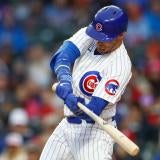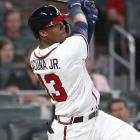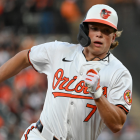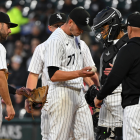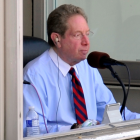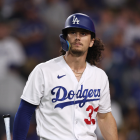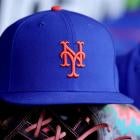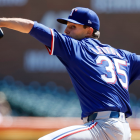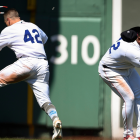In 2017, the Braves suffered through one of the most frustrating seasons in recent franchise history.
Hoping to round into form with the opening of the publicly financed boondoggle that is SunTrust Park, Atlanta instead limped to a 72-90 record, looking years away from making good on a long-term rebuilding project that was supposed to make everything right again.
Oh, how things have changed. The Braves have soared to the best record in the National League at 26-17, scoring 57 more runs than their opponents and demolishing all comers on the road with a sparkling 17-8 record away from The House That Short-Sighted City Planning Built. The Braves are on pace to win 98 games, a humongous 26-game leap over last year's result.
As we pass the one-quarter mark of the season, the obvious question is this: Can the best team in the National League keep this up? To answer that question, it's worth examining how Atlanta has arrived at this point, and what can we learn from other teams that made huge year-to-year jumps.
The Braves' success starts with their offense. They're hitting .264/.336/.437 as a team, the best line of any NL team (on a park-adjusted basis). In non-fancy terms, they lead the National League by scoring 5.2 runs per game, trailing only the Yankees and Red Sox for MLB supremacy ... despite the Yankees carrying an Opening Day payroll more than 40 percent higher, the Red Sox nearly twice the size.
The Braves ran out a below-average attack last season though not a terrible one, finishing 10th in the NL in park-adjusted offense. A lot of the blame falls on a nasty spate of injuries. Only three Braves players appeared in more than 120 games last season. The biggest loss was Freddie Freeman, who set career highs in on-base percentage (.403) and slugging (.586) but played in just 117 games.
This year, three different Braves (Freeman, Nick Markakis, and Ozzie Albies) have played in every game, Ender Inciarte has played in every game but one, and rookie sensation Ronald Acuna has been in the lineup every day since making his major league debut on April 25.
Call it causal or correlational, but there's no denying this: The Braves have taken flight since Acuna made his MLB debut. They're 14-7 since then, hitting for a higher average, slugging at a higher rate, and striking out less frequently than in the pre-Acuna era.
The 20-year-old center fielder is merely one piece of a radical youth movement, one that has seen the Braves field the three youngest players in the majors. As impressive as Acuna's instant ability to handle big-league pitching has been (he's hitting .262/.333/.476, 21 percent better than league average), fellow Baby Brave Ozzie Albies has been even better. The 21-year-old second baseman was expected to make his mark with speed and athleticism. Instead he's done a mean impression of Aaron Judge, ranking among the league leaders with 13 home runs and racking up a jaw-dropping 30 extra-base hits.
It's not just the kids who've energized this team. Nick Markakis was once one of the best and steadiest hitters in the league with the Orioles. But his numbers declined over the years, and nobody expected much in 2018. He's shocked the baseball world by posting the best numbers of his career (by far), batting a heady .343 with a .415 on-base percentage. And after 12 seasons of making his mark as a line-drive hitter, he's cranked up the power, on pace to swat a career-high 26 home runs.
Neither those three hot starters' feats, nor the typically sky-high performance of Joey Votto clone Freddie Freeman, look like flukes. Markakis is making more hard contact than ever before. Albies has made even more frequent hard contact, with a strong flyball-to-groundball rate that's helped guide those hard-hit balls into the gaps, and over the wall. Acuna's shown a precocious ability to do damage when pitchers challenge him, making contact on nearly 90 percent of the pitches he's seen in the strike zone. In fact, the only Braves hitter who's delivered below-average offensive numbers is Ender Inciarte, and he's on pace to steal 70 bases while playing his usual brand of Gold Glove defense.
The other major improvement has come from the team's starting pitching. Last season the Braves used 11 different starting pitchers, but only one of them flashed an ERA lower than 4.00 (Max Fried, who started just four games). This year, the pendulum has swung the other way: Only one of the seven Braves hurlers to start a game has delivered an ERA higher than 4.00.
Here again, youth has been served. The rotation's top starters -- Julio Teheran, Mike Foltynewicz, and Sean Newcomb -- are all 27 or younger. All three have hiked their strikeout rates this season, while Newcomb has grown into the staff's most prolific groundball artist too, inducing wormburners on nearly 50 percent of his balls in play allowed. Twenty-year-old right-hander Mike Soroka offered another glimpse of the team's bright future in his major-league debut, holding the Mets to just one run over six innings on May 1 before running into trouble in his next two starts and landing on the disabled list. Still, he's part of a next wave of pitching talent that could buoy the Braves in the future, and potentially lend a hand this year too.
Now here's some more uplifting news: The Braves haven't arrived at this point through a stroke of luck. BaseRuns gauges what a team's record would look like if their hit sequencing sat at league-average levels -- in other words, it adjusts for unusually frequent bunching of hits on offense, and unusually frequent instances of pitchers "scattering" hits. By that measure, the Braves have actually underperformed by one win, which is to say, they've been really good, not really lucky.
Below you'll find a list of all the teams that surged by 20 games or more from one year to the next over the past 10 seasons. The CBS research team has compiled some notes on how those clubs have fared; it's an instructive look at what might await the Braves, as well as the Phillies, who are on pace to add a mind-blowing 30 wins to their 2017 total. (We'll break down the Phillies in another piece soon!)
- Since 2008, 12 teams have increased their win total by at least 20 from the previous season. Eight of them had a pitching staff that ranked in the younger half of the league and seven of them had a lineup that ranked in the younger half of the league.
- The only team that didn't have a lineup or pitching staff in the younger half of the league was the 2013 Red Sox, the only one of these 12 teams that won the World Series.
- Only one other team made the World Series, and that was the team with the highest increase: the 2008 Rays (97-65, +31) who lost to the Phillies.
- Only one of the 12 failed to make the playoffs: the 2009 Mariners (85-77, +24).
- In the season after their 20-win improvement, only three of the 10 eligible teams made the playoffs again (two of the 12 did it last year), and only one of those three made it to the LCS.
Bats, pitching, and a lot of youth. All of these factors are working in Atlanta's favor. In a surprisingly rugged NL East that features an upstart Phillies team, a Mets club that's improved its pitching, and a powerful Nationals team vying for its third straight division title, at the end of this year we might be talking about a Brave New World.







